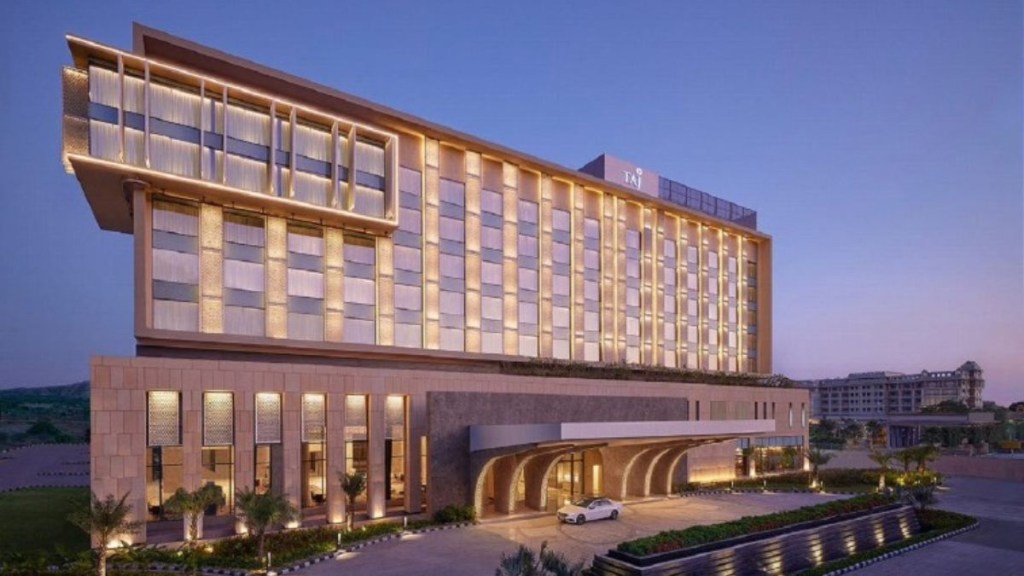Metros and tier-I cities may continue to be business drivers for hospitality groups in India but the real growth opportunity lies in smaller, emerging markets that have shown impressive growth in the past couple of years, on the back of the pandemic. That is why Indian Hotels Company Ltd (IHCL) is looking beyond the big cities for expansion. Puneet Chhatwal, MD & CEO at IHCL, calls CY22 “a record year for the company” in terms of its expansion, having added 30 hotels in the pipeline, and having unveiled 17 new properties. “We will be opening 18 hotels over the next 12 months across all our brands. IHCL reached a milestone of over 250 hotels last year, and is in line with the vision of being a 300-hotel portfolio by 2025,” he says.
The hospitality enterprise, whose brands include Taj Hotels, SeleQtions, Vivanta and Ginger Hotels, has over the past three months, launched properties in locations such as Rajkot and Bharuch in Gujarat, Jamshedpur (Jharkhand), Indore (MP), Nagpur (Maharashtra) and Rajahmundry in Andhra Pradesh. Its youngest brand, amã Stays & Trails, which operates in the homestay segment, has also expanded its presence and now has a portfolio of over 110 bungalows.
Chhatwal asserts that the travel and hospitality industry outlook is buoyant, something that has also reflected in IHCL’s business performance in the last quarter. “The company reported strong operational and financial performances across its businesses in Q3 of this fiscal, resulting in an all-time high profit after tax (PAT) of Rs. 383 crore, which exceeds any previous full year PAT. This mirrors the growth the industry has been witnessing due to increased domestic travel,” he states.
India’s hotel market, including domestic, inbound and outbound, was estimated at $32 billion in FY20 and is expected to reach $52 billion by FY27, as per a FICCI report. It is expected that a significant volume of growth will be driven by domestic travel, and smaller markets will play a key role.
Expanding footprint
According to the Indian Hospitality Trends and Opportunities report by hospitality consulting firm Hotelivate, as of March 2022, branded hotels operate in as many as 279 different cities in the country. Of these, 22 cities have inventories of over 1,000 rooms. Manav Thadani, founder and chairman, Hotelivate, says historically, tertiary markets were served by independent, unbranded hotels. Hotel brands that have debuted in new markets have gone on to become the go-to hotels for leisure, business and weddings. “Most of these properties are smaller than the ones in large cities, with an inventory of around 80-100 rooms. The growth largely is being driven by corporate travel and to some extent, weddings. Commercial demand in these markets accounts for 75% of the business,” observes Thadani.
While the firm has increased its presence in emerging, new markets, Chhatwal notes that the metro cities are still underserved and there is scope to add more rooms across segments in these markets too. He adds that smaller cities with a lesser share of branded rooms have witnessed nearly 50% growth in the last decade. “Larger commercial markets like Delhi and Mumbai attract multiple segments of business including corporate and social events, transient movement and leisure travel. In smaller cities, the demand is not as broad based. However, opening branded hotels stimulates it, capturing the latent demand as well as attracting new businesses like conferences and sporting events,” he says.
As far as city presence is concerned, the Hotelivate report shows IHCL at the top of the list with hotels in 77 Indian cities. It is followed by ITC Hotels and Radisson Group, which are present in 71 and 63 cities, respectively. Indian brands such as Sarovar Hotels have also expanded.
Among the key advantages to expansion in tertiary markets is the lower cost of real estate, notes Thadani. “Real estate in cities like Mumbai, Delhi and Bengaluru can be prohibitively expensive, and from a cost standpoint, smaller markets have a clear advantage. Hotels don’t always need to build basement parking, if they are able to get land adjacent to the property for parking. That also brings down cost,” he explains.
Going forward, Thadani predicts that 50% of the growth for the hospitality market will come from secondary cities, 25% from leisure-led destinations and another 25% from top metros.

